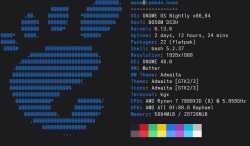How to request advice:
>Budget>Intended use (media, source, environment)>Frequency response preference and music examples>Past gear and your thoughts on themFAQ:
>Where do I buy IEMs?Amazon, Aliexpress, Linsoul, Hifigo, Shenzhenaudio
>Shopping Guide (IEMs, PMPs, Cables, Ear Tips, etc.):https://rentry.org/consoomer_guide>EQ Guide (EQ 101, Targets, Myths & Misconceptions, Case Studies, etc.):https://4ciemg.github.io/IEM-EQ-Guide/>/iemg/'s Blog/Wiki (Archieve, Books & Papers, Music Editorial, etc.):https://4ciemg.github.io/IEMGazette/>Frequency Response Graph Toolsquig.link
>Budget Wire Over-Ear IEMs:• Tripowin Ruta10 (Mild V) - $18
• Tanchjim Bunny (Mild U) - $20
• Truthear Gate (Mild V) - $22
• EPZ Q1 Pro / G10 (V-shape) - $35
• Kiwi Ears Cadenza (Mild V) - $35
>Bullet IEMs:• Tanchjim ONE DSP (5 Presets/5-Band PEQ) - $28
• Etymotic ER2XR (Neutral) - $140
>Flathead Earbuds:• Blue Vido (Warm) - $5
• Yincrow X6 (Warm) - $10
>USB-C DACs:• JCally JM6 (Non Pro) - $8
• JCally JM20 Pro (8-Band PEQ) - $24
• Tanchjim Stargate II (8-Band PEQ) - $38
• Qudelix 5K (20-Band PEQ/GEQ) - $110
>PMPs:• HiBy R1 - $85
• Hifi Walker H2 / Surfans F20 (Rockbox) - $120
• HiBy M300 - $200
>AVOID USING:• Mainboard audio when using multi-driver pos
Previous Thread:
>>105798293 









